
A forest is an area of land dominated by trees. Hundreds of definitions of forest are used throughout the world, incorporating factors such as tree density, tree height, land use, legal standing, and ecological function. The United Nations' Food and Agriculture Organization (FAO) defines a forest as, "Land spanning more than 0.5 hectares with trees higher than 5 meters and a canopy cover of more than 10 percent, or trees able to reach these thresholds in situ. It does not include land that is predominantly under agricultural or urban use." Using this definition, Global Forest Resources Assessment 2020 found that forests covered 4.06 billion hectares, or approximately 31 percent of the world's land area in 2020.

Forestry is the science and craft of creating, managing, planting, using, conserving and repairing forests and woodlands for associated resources for human and environmental benefits. Forestry is practiced in plantations and natural stands. The science of forestry has elements that belong to the biological, physical, social, political and managerial sciences. Forest management plays an essential role in the creation and modification of habitats and affects ecosystem services provisioning.

A woodland is, in the broad sense, land covered with woody plants, or in a narrow sense, synonymous with wood, a low-density forest forming open habitats with plenty of sunlight and limited shade. Some savannas may also be woodlands, such as savanna woodland, where trees and shrubs form a light canopy.

Coppicing is the traditional method in woodland management of cutting down a tree to a stump, which in many species encourages new shoots to grow from the stump or roots, thus ultimately regrowing the tree. In a coppiced wood, which is called a copse or coppice, young tree stems are repeatedly cut down to near ground level, the resulting living stump called a stool. New growth emerges, and after a number of years, the coppiced tree is harvested, and the cycle begins anew. Pollarding is a similar process carried out at a higher level on the tree in order to prevent grazing animals from eating new shoots. Daisugi, is a similar Japanese technique.
Silviculture is the practice of controlling the growth, composition/structure, as well as quality of forests to meet values and needs, specifically timber production.

An old-growth forest, sometimes synonymous with primary forest, virgin forest, late seral forest, primeval forest, first-growth forest, or mature forest, is a forest that has attained great age without significant disturbance, and thereby exhibits unique ecological features, and might be classified as a climax community. The Food and Agriculture Organization of the United Nations defines primary forests as naturally regenerated forests of native tree species where there are no clearly visible indications of human activity and the ecological processes are not significantly disturbed. Barely one-third of the world's forests are primary forests. Old-growth features include diverse tree-related structures that provide diverse wildlife habitats that increases the biodiversity of the forested ecosystem. Virgin or first-growth forests are old-growth forests that have never been logged. The concept of diverse tree structure includes multi-layered canopies and canopy gaps, greatly varying tree heights and diameters, and diverse tree species and classes and sizes of woody debris.
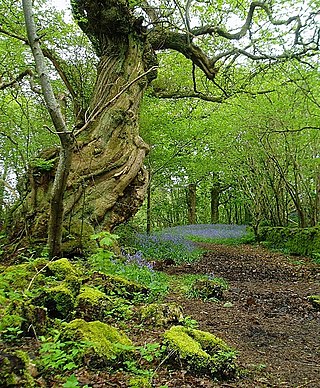
In the United Kingdom, ancient woodland is that which has existed continuously since 1600 in England, Wales and Northern Ireland. Planting of woodland was uncommon before those dates, so a wood present in 1600 is likely to have developed naturally.

Clearcutting, clearfelling or clearcut logging is a forestry/logging practice in which most or all trees in an area are uniformly cut down. Along with shelterwood and seed tree harvests, it is used by foresters to create certain types of forest ecosystems and to promote select species that require an abundance of sunlight or grow in large, even-age stands. Logging companies and forest-worker unions in some countries support the practice for scientific, safety and economic reasons, while detractors consider it a form of deforestation that destroys natural habitats and contributes to climate change. Environmentalists, traditional owners, local residents and others have regularly campaigned against clearcutting, including through the use of blockades and nonviolent direct action.

Forest dynamics describes the underlying physical and biological forces that shape and change a forest ecosystem. The continuous state of change in forests can be summarized with two basic elements: disturbance and succession.
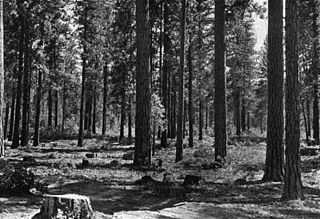
Selection cutting, also known as selection system, is the silvicultural practice of harvesting trees in a way that moves a forest stand towards an uneven-aged or all-aged condition, or 'structure'. Using stocking models derived from the study of old growth forests, selection cutting, also known as 'selection system', or 'selection silviculture', manages the establishment, continued growth and final harvest of multiple age classes of trees within a stand. A closely related approach to forest management is Continuous Cover Forestry (CCF), which makes use of selection systems to achieve a permanently irregular stand structure.
Forest management is a branch of forestry concerned with overall administrative, legal, economic, and social aspects, as well as scientific and technical aspects, such as silviculture, protection, and forest regulation. This includes management for timber, aesthetics, recreation, urban values, water, wildlife, inland and nearshore fisheries, wood products, plant genetic resources, and other forest resource values. Management objectives can be for conservation, utilisation, or a mixture of the two. Techniques include timber extraction, planting and replanting of different species, building and maintenance of roads and pathways through forests, and preventing fire.
Variable retention is a relatively new silvicultural system that retains forest structural elements for at least one rotation in order to preserve environmental values associated with structurally complex forests.
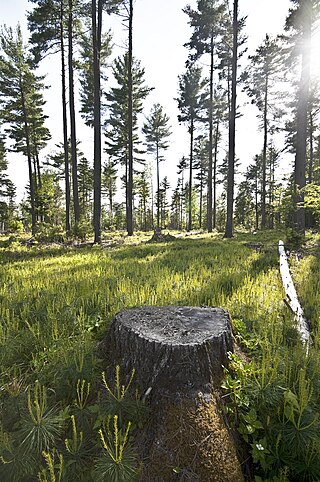
Shelterwood cutting is the progression of forest cuttings leading to the establishment of a new generation of seedlings of a particular species or group of species without planting. This silvicultural system is normally implemented in forests that are considered mature, often after several thinnings. The desired species are usually long-lived and their seedlings would naturally tend to start under partial shade. The shelterwood system gives enough light for the desired species to establish without giving enough light for the weeds that are adapted to full sun. Once the desired species is established, subsequent cuttings give the new seedlings more light and the growing space is fully passed to the new generation.
When logging began in British Columbia, Canada, in the late 19th century, the overriding concern was to harvest timber in the most economical fashion. Reforestation, aesthetics and protection of fish and wildlife habitat were not issues of great concern.
A forest stand is a contiguous community of trees sufficiently uniform in composition, structure, age, size, class, distribution, spatial arrangement, condition, or location on a site of uniform quality to distinguish it from adjacent communities.
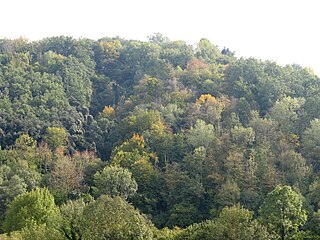
Close to nature forestry is a management approach treating forest as an ecological system (ecosystem) performing multiple functions. It is developing in the peri-alpine coutries of Europe for more than 70 years, based on certain sustainable forest management practices from the late 19th century. Close to nature silviculture tries to achieve the management objectives with minimum necessary human intervention aimed at accelerating the processes that nature would do by itself more slowly. It works with natural populations of trees, ongoing processes and existing structures using cognitive approach, as in the case of so called selection forest or other types of uneven-aged forests. Its theory and practice takes forest as a self regulating ecosystem and manages it as such.
Silvology is the biological science of studying forests and woodlands, incorporating the understanding of natural forest ecosystems, and the effects and development of silvicultural practices. The term complements silviculture, which deals with the art and practice of forest management.
A mixedwood stand is a forest type in which 26% to 75% of the canopy is made up of softwood trees.

Faskally Forest, also known as Faskally Woods, is a wooded area in the historic county of Perthshire, Scotland. It is among the mixed woodlands of Perthshire, and is well known for its radiant colours during the autumn. It is one of the early forest lands of Perthshire Big Tree County. Originally a "model woodland" developed in the 19th century with a resort owned by Archibald Edward Butter. In 1953, Faskally was acquired by the Forestry Commission of Scotland to set up a school for training young foresters.
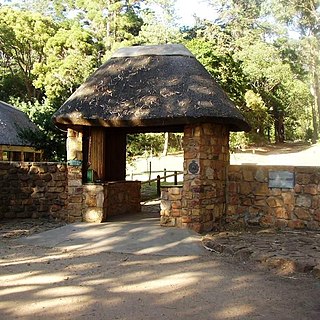
The Tokai Arboretum was the first large-scale silviculture experimental station in Cape Town, South Africa. The area of the main Arboretum, at Tokai Park, is 14 ha. Several adjacent compartments extend the area to 26 ha. The Arboretum was declared a National Monument in 1985, on its 100th anniversary. It contains stands of Eucalyptus and other trees from the original silviculture experiments in South Africa. In the 1990s a Gondwana Garden was created to display the plants typical of the Cape 100 million years ago.













